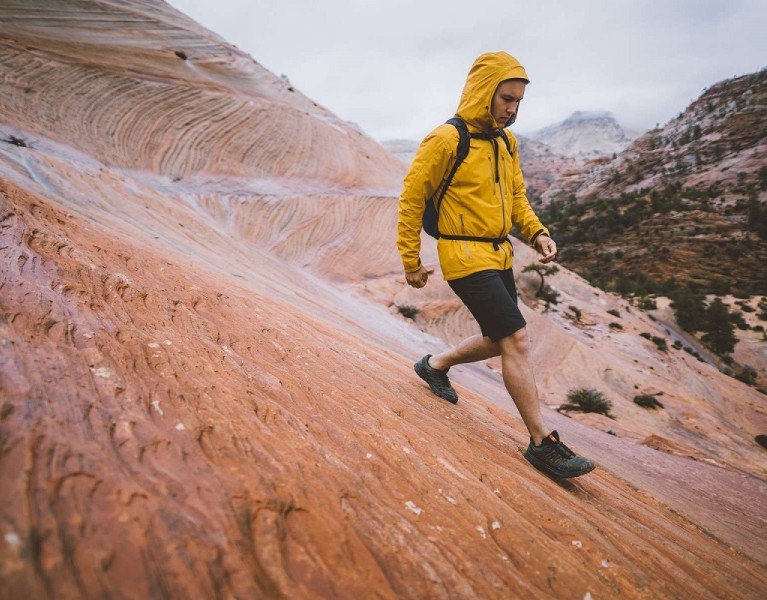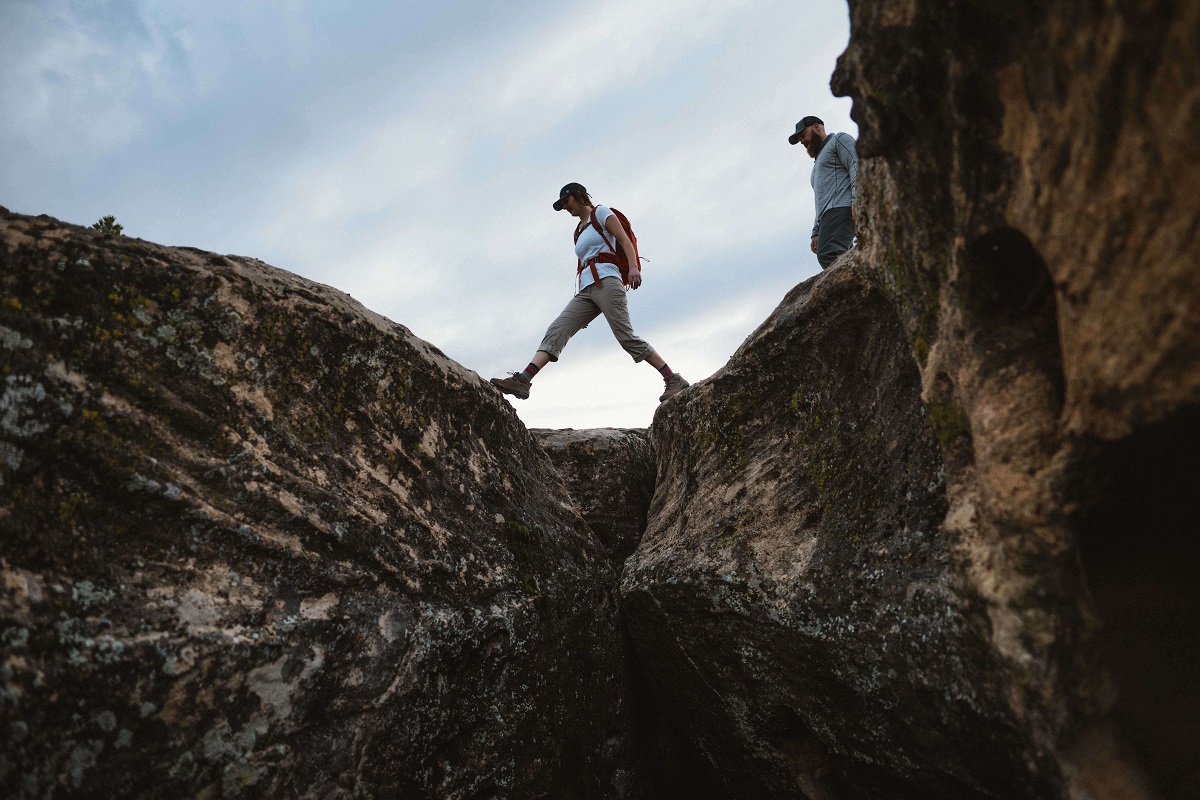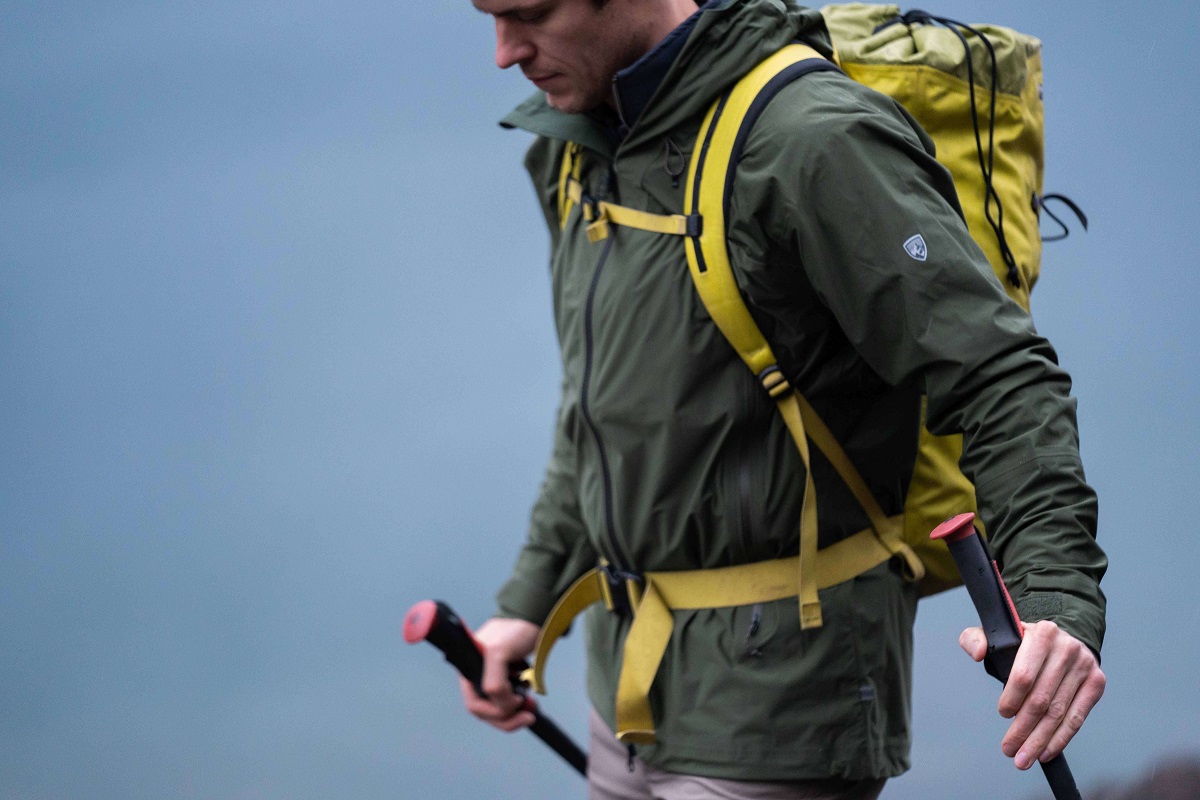
How the Right Trail Gear Affects Outdoor Experience
Table of Contents [Show]
It's true what they say: Hiking and trail running are the easiest outdoor activities to break into because you don't have to shell out an entire month's paycheck to get started. But if you've worked Search and Rescue as I do, fine print runs through your head whenever you hear that. If you've ever put up with a hiking buddy who's complaining about blisters, ill-fitting clothes, or sunburn, you've wondered if it's appropriate to call in an emergency airlift for yourself. It's essential to make smart decisions when you equip yourself for any outdoor adventure, and there's no excuse for a hiker to ruin their (or everyone else's) day because they took for granted the value of outdoor performance clothing, packs, and accessories. "Outdoor performance" sounds a bit slick for a five-mile loop, but too many people think jeans, knock-off Chuck Taylors, and cute cotton tank tops are appropriate trail clothes. Plus, the right stuff will make you a more motivated and efficient runner or hiker, allowing you to pass benchmarks for distance and speed while getting you deeper into new-to-you territory. Here's what to remember when you're shopping for trail gear and outdoor performance clothing:
Choose designs and accessories appropriate for trail conditions and carrying weight
If you plan to climb up mountainsides or over boulders, deadfall, and rocks, clothing that allows for full range of motion and has low-profile seams will reduce chafing. Articulated legs and gusseted crotches may seem like fancy features, but you'll be a lot more comfortable and agile when you've got room to move. Rough terrain and heavier packs require sturdier footwear with more ankle support. While many long-distance hikers love ultralight running shoes, most hikers and trail runners do best with shoes designed for rough terrain. Your hiking shoes or boots should have grippy treads, reinforced toe boxes, and breathable uppers. Pick up extra laces, and upgrade the pair on your new shoes if they seem too floppy or flimsy. Trekking poles help safely navigate water crossings, rocky ground, and steep trails. Even on flat ground, they reduce fatigue.

Check outdoor clothing and equipment for the right fit
Why invest in high-quality outdoor gear if it rubs you the wrong way? Shop at specialty outdoor outfitter websites and stores, and don't blow off the salespeople when they offer help. They usually know their stuff, and can show you how to check boots and equipment for the right fit. Try on footwear at the end of a shopping day when you've been on your feet a while, and wear your favorite hiking socks. Walk around the store for at least 15 minutes, and when you make your choice, break in your shoes before you leave for the trail head.
Tip: Keep your cold season socks close to warm-weather thickness. If you plan to wear the same footwear year-round, you'll maintain the right fit.
Back and hip packs, no matter how lightweight, should evenly distribute weight and conform to your specific anatomy. Take your time kicking tires when you're trying on packs. Stuff them with weight and bulk equivalent to your usual hiking and camping kit (let the sales staff know what you're doing so they don't rat you out for shoplifting), and jump up and down. Can you adjust the straps to reduce movement and load shift? Are there any pressure points? As you rack up the miles any discomfort will be become amplified. I'm a fan of renting or borrowing gear if I'm just breaking into a sport, but only if I'm confident I have the right fit.
Protect yourself from UV rays
High-quality UV-filtering shades, especially with polarized lenses, really help when there's snow on the ground or a lot of light bouncing off water, granite or limestone. Quality sunglasses will help you pick out hazards when you're traveling at a good pace. Sun and wind exposure speed up dehydration, and sunburned skin can't effectively regulate body temperature and perspiration. Sunscreen is a must, but loose, long-sleeved shirts cut from enhanced UV-resistant fabric will keep you cooler and less prone to sun damage than tees or traditional long-sleeve synthetics. Versatile UV-resistant neck gaiters are becoming popular. They're lightweight, thin, and stretchy, and you can pull them up over your nose without compromising your breathing.
Create a layered clothing system made from breathable materials
Be able to warm up and cool down as your exertion level and ambient temperatures fluctuate, and always carry a wind and waterproof outer shell. Base layers that wick away moisture reduce skin irritation and prevent hypothermia. Performance synthetic or Merino wool socks keep your feet warm even if your feet sweat or you've included puddle-stomping in your trail workout routine. There's a saying among trail rats: Cotton kills. Not only can it chafe your skin and tender bits, but it also doesn't keep you warm when it's saturated with water or sweat (or tears, if you have blisters).

Prepare for breakdowns
When you're better able to cover more ground and leave the majority of trail traffic in your dust, you need to be able to take care of yourself if something does go haywire. The issue might be resolved by a stash of moleskin in your pack or pocket, or with a Mylar space blanket if your core body temperature drops like a rock in an unexpected cold snap.
Tip: Wrap each trekking pole or your hiking staff with a foot or so of duct tape for emergency shoe blowouts or other trail emergencies. If you don't use poles, wrap your reusable water bottles.
Even Spartan trail runners and ultralight speed trekkers should pack a first aid kit, and a personal locator beacon (PLB) will help you get rescued if you're injured or lose the trail. Choose a model with a texting feature and you won't have that nagging worry that your friends back home will call out Search and Rescue if you decide to push yourself a few extra miles. And if you do need assistance, you'll be easier to find—even under snow or tree canopies—if you're wearing performance outdoor clothing made with high-tech radar-reflective fabric. Common sense always applies, but when you're traveling beyond the average pace or distance, you're more vulnerable and exposed to gear failures, injuries, and the elements. Be sure to hydrate before you set out, and bring enough water or purification options to get you through a day, just in case. Don't skimp on trail snacks, either. Calorie-rich treats will keep you from physically and mentally bonking out, and serve as motivators. Finally, keep in mind that with the right clothing and gear, you'll be better motivated and prepared to push yourself. Just don't overdo it! Turn back before you think you need to, take breaks, and pay attention to your body's signals.
Get ready, get set, go hiking!
You can always pick up cheap gear at discount stores, but it will cost more in the end as you'll replace it more often. In the meantime, you'll sacrifice comfort and safety, and you won't be as excited about your next run or hiking trip. Kick some tires, do your research, and take your time selecting the best adventure products your budget allows. Learn how to clean, maintain, and store your outdoor clothing and gear, and always have it out-the-door ready. Get all that squared away, and you won't be able to blame crampy toes, second-degree sunburns, and wedgies for a weekend video game binge. But you can always point to your gear when people ask you why you kick so much off-road ass.


